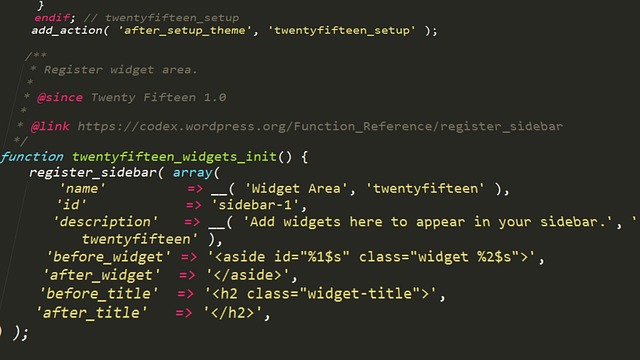Charging/budgeting in agile software development projects presents a unique set of complexities and challenges. Why is it important to establish a budget and how to best go about creating one for an agile project? How precisely should billing and payments be monitored?
A large part of the challenge of managing the financing of an agile software development project lies in the fact that these projects typically involve considerable experimentation, making exact cost estimates difficult. According to Belinda Allwood, co-founder of Dextal, “Agile project teams tend to view spending money as a necessary evil, since costs are often unpredictable and hard to estimate accurately.” Furthermore, research by leading project management firms such as Deloitte and McKinsey have confirmed that when it comes to agile project budgeting, there is a lack of consistency in the approaches taken by development teams.
In this article, you will learn about the benefits of implementing a structured agile budgeting framework for agile software development projects, and how to go about creating and managing such a budget. Techniques and tools for tracking projects performance in terms of cost and also a case study that examines a successful example of agile project budgeting will also be discussed.
Finally, this article will provide advice on how to maintain accurate billing records, as well as considerations for budget forecasting when dealing with evolutionary development and the importance of balancing customer requirements with budgetary realities. By taking the necessary steps to account for budgeting in agile software development projects, it is possible to maximize value and to remain on the right side of software development projects.
Definitions of Agile Software Development Projects
Agile software development is an iterative approach to software development that emphasizes collaboration, customer involvement, and fast response times. It focuses on breaking down a larger project into smaller pieces, so that each piece can be worked on individually and more quickly. In agile software development, teams work together to identify the goals and expectations of the project, and then develop a solution that meets those needs.
Charge: The cost or fee associated with a software project.
Budget: A financial plan for a project, detailing cost estimates for labor and materials.
Agile Software Development: A development approach that emphasizes collaboration, customer involvement, and fast response times.
Iterative: Going through a task or process multiple times in order to improve its quality or accuracy.
Collaboration: Working with other people in order to achieve a common goal.
Customer Involvement: Customers play an active role in the development of a software project, providing feedback and suggestions.
Understanding the Basics of Agile Software Development
What is Agile Software Development?
Agile software development is an iterative software engineering approach that uses short development cycles, or ‘sprints’, to build software incrementally. It was first developed by software engineers in 2001 in an attempt to create more efficient and reliable software development processes. The main idea behind agile software development is that it allows for rapid development and changes that can be quickly integrated into the software, allowing developers to create software projects faster and with greater accuracy.
Agile software development relies on a series of cycles, or sprints, to build software incrementally. A sprint typically lasts between two to four weeks and is focused on a specific development task. During each sprint, teams are expected to deliver a working product that meets specific requirements. At the end of each sprint, the team is required to present the progress they’ve made and make adjustments, if needed. This iterative development process allows teams to refine their products and ensure that they are delivering the best possible outcome.
Charging/Budgeting in Agile Software Development Projects
When it comes to charging and budgeting for agile software development projects, there are some unique considerations that teams must take into account. One of the most important is the fact that since agile software development is an iterative process, teams will often need more upfront budget to ensure that all phases of the project are designed and implemented correctly. This means that teams should plan for both initial development and ongoing maintenance fees, as well as potential costs associated with changes or new features.
Additionally, teams should budget for the time required to manage the project on an ongoing basis. Agile software development teams are expected to monitor progress and track feedback from their customers throughout the project, as well as make changes as needed. All of this can be significantly more time-consuming than traditional software development projects, so teams should plan accordingly.
Finally, agile software development also requires teams to invest in training and education. Teams will need to keep up with new technologies and trends, and be prepared to quickly adapt if their customers’ needs change. Investing in up-to-date training can help keep teams ahead of the curve and ensure that their projects are completed quickly and efficiently.
Benefits of Agile Software Development
Agile software development is an effective way of managing complex projects which can range from creating software applications to improving existing products. Its iterative approach allows teams to quickly develop and iterate on their work, and enables them to quickly refine their product based on customer feedback. Agile software development can also be used to save time and money, as it typically costs less than traditional software development methods. Additionally, investing in agile software development can help ensure that products are always up to date, as teams can quickly integrate new features and changes as needed.
Concluding Points
When it comes to charging and budgeting for agile software development projects, teams must be prepared to invest both time and money upfront. Teams should plan for initial development, maintenance fees, and time to manage the project on an ongoing basis. Additionally, teams should invest in training and education to stay up-to-date on the latest trends and be prepared to quickly adapt if their customer needs change. Investing in agile software development can pay off in the long run, as teams can save time and money while creating reliable products that are always up to date.
Key Takeaways:
- Agile software development is an iterative approach that uses short development cycles, or ‘sprints’, to build software incrementally.
- When it comes to charging and budgeting for agile software development projects, teams should plan for initial development, maintenance fees, and time to manage the project on an ongoing basis.
- Teams should also invest in training and education, as well as be prepared to quickly adapt if customer needs change.
- Investing in agile software development can pay off in the long run, as teams can save time and money while creating reliable products that are always up to date.
Identifying Cost and Budgeting Strategies
Identifying Cost and Budgeting Strategies in Agile Software Development Projects
Factoring Cost Factors
Successful budgeting strategies require accurate knowledge of the cost factors associated with an agile software development project. Understanding the cost structure and resources involved helps to effectively plan and manage the budget. Major cost factors include the cost of labor, the development platform, hardware, software, consultant fees, support services, and other miscellaneous fees. Labor cost is typically the biggest expense, and can include the cost of the development team, including software engineers, designers, and other professionals. Additionally, larger agile software projects often require a large tool set and platform which can involve the cost of licenses, hardware, and training costs. Knowing the cost structure upfront can help to proactively manage budget and keep the project on track.
Planning an Agile Budget
When planning an agile development budget, it is important to consider the duration of the project and understand the breakdown of tasks needed to complete it. A thorough analysis of the project should be done to ensure all the necessary elements for successful completion are incorporated. Also, it is important to factor in any risks or unknowns that may arise during the project. By doing so, it prevents potential cost overruns due to unforeseen circumstances. Additionally, any risks should be addressed as early as possible in the planning process. This helps to identify the contingency resources that are required to make sure the project will be successful.
It is also important to ensure that allocating the right budget and resources beforehand. Ann inexpensive way of doing this is by using resources such as project management software tools that allow you to track status, costs, and timeline easily. Also when creating the budget, it is important to avoid over-planning or under-planning. Over-planning typically leads to unnecessary expenditure on resources they are not needed, whereas, under-planning can lead to delays and cost overruns if the necessary resources are not provided on time.
Finally, when creating the budget it is important to remember that agile software development projects are typically very fluid and the budget may change over time. This makes it even more important to have resources in place that can provide flexibility when needed. By taking these steps and understanding the cost structure, successful budgeting strategies can be created to ensure the success of an agile software development project.
Implementing Charging and Budgeting Processes
Budget Planning During Agile Projects
The agile methodology of project management is increasingly being used to manage software development projects. Different from the traditional, sequential life cycle, the agile process is iterative, allowing for continuous feedback and corrective actions. With this approach comes the challenge of budget predictability and control. Fortunately, there are a few practical steps that organizations can take to ensure efficient budgeting and charge processes.
First and foremost, team members should never underestimate the importance of budget planning in agile projects. Without sufficient planning, a project can suffer from misallocated resources and a resultant cost overrun. Therefore, it should be a priority to define the cost assumptions and budget up front. This includes comparison of different solution options and cost analysis for each, as well as risk, analysis and assigned tasks for roles to ensure the maximum effectiveness and efficiency of allocated budget items.
Charge Management During Agile Projects
In order for the agile project team to manage their budget and ensure that it is being used effectively, it is important to assign realistic charges to each task. These charges should take into account the allocated resources, skills and the expected time required to complete the task. It also helps to think ahead to any possible impediments to project success, such as delays, management requirements or customer feedback. The team should also be mindful of any unexpected spikes in cost that may arise during the project and have contingencies in place to mitigate any financial risks.
Finally, the agile team should always review and adjust their charges and budget on a regular basis. This ensures that the project is staying on track and allows for a more efficient and cost-effective approach to problem solving. As the project progresses, the team should be able to constantly re-evaluate their assumptions and adjust their budgeting and charges accordingly. This allows the team to better control their budget, mitigate risks and be more agile in their decision-making.
By incorporating these simple steps, an agile team can ensure that their projects stay within budget and that their efforts are not wasted on ineffective or unnecessary tasks. A detailed and thoughtful budget planning, together with a well-defined charge management process, will ensure successful project delivery and maximize return on investment.
Conclusion
When it comes to budgeting and charging in agile software development projects, it is critical for organizations to consider the specific processes and frameworks they should employ. With the continuing rise of agile methodology, it is important to understand how building a project in an agile manner can have a profound impact on successful budgeting and charging. This thought-provoking question begs us to look further into the nuances of this system.
As agile software development continues to evolve at a rapid pace, it is important to stay on top of the latest trends. To help bridge the gap between budgeting, charging, and agile development, our blog delves into the topics of agile methodology, budgeting considerations, and payment models. Follow us for fresh insights and stay tuned for our new releases!
FAQ:
Q: What is agile software development?
A: Agile software development is an incremental and iterative approach to project management, which focuses on delivering the highest value in the shortest amount of time. It follows a collaborative approach and allows for frequent changes, rapid iterations, and evolution of the product.
Q: Which processes and frameworks should organizations consider using?
A: Organizations looking to employ agile development should review processes and frameworks such as Scrum, Kanban, and Test Driven Development. Each framework has its own merits and may be employed depending on the specific project at hand.
Q: What impact does agile development have on budgeting and charging?
A: Agile development accounts for the ever-evolving project scope by focusing on delivering the highest value in the quickest way. This approach can be applied to the budgeting and charging aspects of a project. Organizations can benefit from understanding how these processes can be integrated into one’s agile workflow.
Q: What is the best way to stay informed on agile development?
A: Following trustworthy blogs that offer timely insights and updates on agile methodology trends is the best way to stay informed. Other tactics, such as attending seminars and webinars, can also be incredibly helpful in keeping up with the latest developments in the field.
Q: What payment models can be used in agile development?
A: Time and material, value-based, and fixed-price contracts are some of the commonly used payment models in agile software development projects. Depending on the project and team size, there may be certain advantages and disadvantages to each payment approach.



